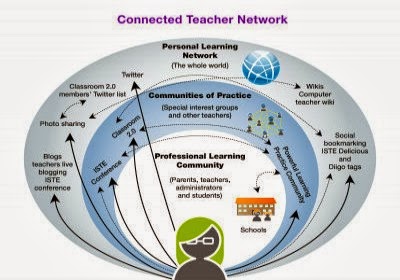ifudaOdksl cd,uh bf.kqu
Collaborative Network Learning (CNL)
Collaborative Network Learning (CNL)
ifudaOdksl bf.kqu hkqfjka y`ÿkajkqfha" mqoa.,hska fofofkl= fyda lSmfofkl= tlaj bf.kqï w;a±lSï ,nd.ekSulss' flaj, bf.kqul § fuka fkdj" ifudaOdksl bf.kqul § bf.kqï m%d.aOkhka" wfkdakH jYfhka yqjudre lr.kq ,nk iïm;a yd l=i,;d weiqßka ,nd.; yel' ksoiqka f,i f;dr;=re ms<sn`oj wkHhkaf.ka úuiSu" wfkfll=f.a woyia we.hSu" iydhlhdf.a lghq;= ksÍCIKh yd Wmfoia §u wdÈh ±laúh yel'
ixfudaOdksl bf.kqu hkakg w¾: ±laùula f,i
zzil%Sh f,i tlsfkld w;r isÿjk wfkdakH l%shdldrlï u.ska w;a±lSï yd wd.ka;=l N=ñldjka yqjudre lr.ksñka" hï ck fldÜGdYhla w;r ±kqu f.dvke.Sfï moku uq,alr.;a bf.kqï l%uhls'ZZ hkak ±laúh yel'
zzil%Sh f,i tlsfkld w;r isÿjk wfkdakH l%shdldrlï u.ska w;a±lSï yd wd.ka;=l N=ñldjka yqjudre lr.ksñka" hï ck fldÜGdYhla w;r ±kqu f.dvke.Sfï moku uq,alr.;a bf.kqï l%uhls'ZZ hkak ±laúh yel'
;j;a wdldrhlska .;aúg
zztla tla bf.kqï ,dNshdg .e,fmk f,i bf.kqï l%ufõohka yd bf.kqï mßirha ilid .ksñka fmdÿ ld¾hhl ksr;j" ;uka w;alr.;a foa wkawhg f;areïlr §ug fhdulqrk l%uhlaZZ f,i o ifudaOdksl bf.kqu f,i o w¾: ±laúh yel'

zztla tla bf.kqï ,dNshdg .e,fmk f,i bf.kqï l%ufõohka yd bf.kqï mßirha ilid .ksñka fmdÿ ld¾hhl ksr;j" ;uka w;alr.;a foa wkawhg f;areïlr §ug fhdulqrk l%uhlaZZ f,i o ifudaOdksl bf.kqu f,i o w¾: ±laúh yel'

ifudaOdksl cd,uh bf.kqu hkq @
What is Collaborative Network Learning (CNL)?
What is Collaborative Network Learning (CNL)?
by; bf.kqï l%uh"
(i) uqyqkg uqyqK,d lrkq ,nk ixjdohla f,i"
(ii) mß>kl wdY%s; idlÉPdjla f,i o mj;ajd .; yel'
ñka fojk l%uh" tkï mß.Kl uQ,slj wka;¾c,h Ndú;fhka isÿlrkq ,nk ifudaOdksl bf.kqu " ifudaOdksl cd,uh bf.kqu f,i w¾:l:kh l, yel'
ñka fojk l%uh" tkï mß.Kl uQ,slj wka;¾c,h Ndú;fhka isÿlrkq ,nk ifudaOdksl bf.kqu " ifudaOdksl cd,uh bf.kqu f,i w¾:l:kh l, yel'
- iÔù uAKv, (Online Form)
- i,a,d mldur(Chat Rooms)
- íf,d.a wvú (Blog)
wd§ jq iudcuh cd,hla Ndú;fhka isÿlrkq ,nk ifudaOdksl bf.kqï fuu >khg jefÜ' fuh Collaborative Network Learning (CNL) f,i olajkq ,efí'


cd,uh ifudaOdksl bf.kqï l%ufha ,CIK
- bf.kqug iajhx fm<Uqu iys; iu Ügfï b.kqï ,dNska w;r fyda bf.kqï ,dNSka yd m%ùKhka w;r isÿjk úoHq;a fonia wdOdrfhka bf.kqula isÿfõ'
- bf.kqï ,dNSka fmdÿ wruqKla fjkqfjka iïm;a yqjudrelr .ksñka id¾:l;ajhla ,nkqfha tlsfkld u; hefmñka iy tlsfkldf.a yelshdjka wkqjh'
- cd,uh bf.kqï mdGdud,djl § wka;¾ il%Sh lKavdhula w;r isÿjk l%shdldÍ iyNd.S;ajhla u.ska l,ska .súi.;a jev rduqjl jq úIh ixo¾Nhla yqjure lr.ekqula isÿfõ'
- fïi`oyd iÔú WmfoaYljrfhl= fyda .=rejrfhl= fyda lKavdï kdhlfhla" myiqlï imhkafkl= f,i lghq;= lrhs'
- bf.kqï mßirhg ;dlaIKh Ndú; lr .ksñka" lKavdhfï wka;¾ il%Sh;djh we;slrjk kj wOHdmksl wdo¾Yhls'
- tu ;dlaIKh" wod, ld¾Hfha kS;s Í;s" N=ñld iy kj ±kqu w;am;alr §u i`oyd ueÈy;aj" tajd md,khg iy ksÍCIKhg nÿka lrjhs'
cd,uh ifudaOdksl bf.kqulg wjYH bf.kqï moaO;sh
bf.kqï ,dNshdg iy wkawhg iydh jk bf.kqï wdOdrl rdYshla fïi`oyd wjYHf õ'
- mß.Kl yd wka;¾cd, ±kqu
- N+f.da,sh jYfhka úisreko Y%jHoDIH cd,uh in`o;d u.ska ieliq mka;s ldudrhla (Vertual Class)
- idlÉPdlsÍfïmyiqlu' (Social Networks)
- fhojqï yqjudre lr.ekSfï l%u' ^WodyrK f,i tla YsIHfhlf.a= ld¾Hh m;%sld wka YsIHkaf.a mß.Kl ;srhu;g ,nd.ekSfï cd,uh myiqlï'
ifudaOdksl cd,uh bf.kqï l%ufha ixj¾Okh
v bf.kqï moaO;s ixj¾Okh lrkakka yg cd,uh wdldrfhka lghq;= l, yelsfõ' úfYaIfhkau bf.kqï moaO;s ks¾udKh lrkakka yg ±kqu f.dvk.d fnodyeÍu" ifudaOdks; jd;djrKh ;=, b;d myiqfõ' tla úIhlg wod, ±kqu úúO ia:dkj, isg uDÿldx. Ndú;fhka Èh;a l, yels ksid bf.kqï l%ufõohka ixúOdkh l, yelsfõ' ±kqu mqmqrd hk f,djla ìysj we;af;a fuu cd,uh ifudaOdksl bf.kqï l%ufha m%;sM,hla f,ih'
úisrekq f,dalfha ifudaOdksl cd,uh bf.kqu Ndú; jk whqre'
fuu l%uh iajdNdúl jYfhka úisreKq f,dalhg ,eî we;s wk¾> bf.kqï wjia:djls' kuq;a úiqreKq f,dalhla ;=, isÿjk bf.kqula ksid mka;s ldur uqK .eiSï yd foaYK fuu l%ufha§ j,ld oukq ,nhs' tfiau bf.kqu hkak Ôú;fha tla fldgila ùuo j,ld ouhs'
j¾;udkfha fuu l%uh iud.ï w;r iqúfYaI;d yqjudre lr .ekSfï§ jdishla f,i fhdodf.k ;sfí' woyia .,d hEu" jd¾;d ;nd.ekSu" wdÈh fuu.ska isÿlrkq ,nhs'
Wiia wOHdmkfha§ m¾fhaIKl Kavdhï w;r fuu l%uh Ndú; fõ' lKavdhfï isák isiqka iuQyhla iy wju jYfhka tla WmfoaYljrfhl= fyda uydpd¾hjrfhl= úiska fuu lKavdhu ifudaOdkslj mqyqKqlr wjidkfha§ ;ks ;ks ld¾hhka ksÍCIKh lr" ,l=Kq msßkukq ,nhs' isiqka ;u N+ñld ;=, isg iuuÜgfï mÍCIljre f,i wka whf.a m¾fhaIKhka jßkajr we.hSug Ndckh lr;s'
;u úIh ud;Dldj Tiafia b;d .eUqre jegySula ,eîug isiqka fhduq lsÍula ifudaOdksl cd,uh bf.kqu ;=,ska isÿfõ' isiqkai`oyd ffoksl ld¾H m;%sldo " jßka jr tall mÍCIK ie,iqï lsÍu isÿùu" flaj, bf.kqul§ f.or jev ie,iqug jvd fndfyda wjOdkfhka hq;=j l, hq;=fõ' lKavdhula jYfhka lghq;= lrk YsIHhka b;d blaukska ;u .eg¨ i`oyd úi`ÿï fidhd .kakd w;r" ;ksj .eg¨ j, isrù fjfyiSu ñka je,fla' 

fuu bf.kqï l%uh Ndú; lrk mdi,a wfmalaId lrkqfha isiqkag ±kqu OdrKh lrf.k muKla fkdisg bka Tíng f.dia l%shdldÍ j iÔù w;a±lSï ,nd§uhs'
ifudaOdksl cd,uh bf.kqfï jdis (-
- foaYk .dia;= $ mx;sldur$ foaYlhkaf.a yd bf.kqï ,dNshdf.a ld,h iu`. ii`ok úg jehjk úhou wvqùu'
- fndfyda mq¿,a f,i úiÍ we;s bf.kqï ,dNska msßila i`oyd fiajd iemhsh yelsùu'
- ld, igyklg wkqj mka;s j,g iyNd.S fkdù ;u fm!oa.,sl lghq;= w;r;=r§ ,efnk úfõl ld,fh§ bf.kqï lghq;= j, fhosh yelsùu'
- wkdrlaIs; ia:dk yd fjk;a kS;s Í;s j,ska ñ§ jvd iajdh;a; bf.kqul fh§ug yelsùu'
- tla úIh fldgia ms<sn`oj jvd mq¿,a bf.kqï w;a±lSï ,eîu'
- M,odhS f,i fõ.fhka lshùu yd ijka §u hk l=i,;d wvq whg we;s ;rï l,a .; lr bf.kqfï fh§ug yelsùu'
- N+f.da,Sh f,i úisÍ we;s lKavdulg ±kqu ,nd§ug yelsùu'
wjdis
- fndfyda ;dlaIKsl WmlrK wjYHùu'
- fyd`o mß>kl yd wka;¾cd, ±kqula ;sìhhq;= ùu'
- bf.kqï lKavdhfï ish,a,ka fyda lSmfofkl= wruqKska msg hdyelsùu'
- iïm%odhsl bf.kqïl%uj,g mukla m%shlrkakka yg f.dapr fkdùu'
- úIh fyda ud;Dldjg wod, miqìï ±kqula we;s whg muKla iqÿiqùu'









